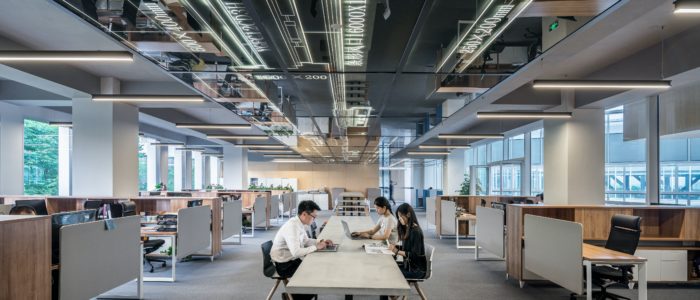
Critics Of Open Plan Offices Shift Their Focus To The Downside Of Virtual Meetings
Why can’t remote work replace the physical workplace altogether? According to an article in the Harvard Business Review cited by workplaceinsight.com,
“…Meetings are important, of course, but not more so than human moments, because it is relationships, not merely acts of collaboration, that create trust between coworkers. Studies have long shown that frequent in-person interactions lead to commitment, support, and cooperation among people on teams. That’s why many tech companies that boast about being 100% online still have an office. Even those that have no physical space emphasize that teams should meet face-to-face on a regular basis…”
Read more at:
https://workplaceinsight.net/well-at-least-nobody-is-whinging-about-open-plan-offices-anymore/
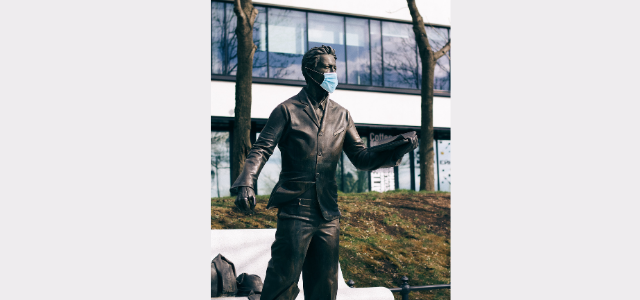
Office Metamorphosis from Physical to Virtual
John Seabrook has written an insightful article, published by the New Yorker, about the paradigm shift from physical offices to remote work and how companies may navigate these unchartered waters in the wake of the pandemic.
The writer poses a thought-provoking set of questions: “What’s an office for? Is it a place for newbies to learn from experienced colleagues? A way for bosses to oversee shirkers? A platform for collaboration? A source of friends and social life? A respite from the family? A reason to leave the house? It turns out that work, which is what the office was supposed to be for, is possible to do from somewhere else”.
In the digital world before the covid shift, the tools that were meant to improve communications in the workplace actually reduced the in person interactions that the open-plan office was supposed to enhance. Now the same tools make it possible to work remotely rather than wasting time online in the office. Surveys cited in the article show that employees actually worked harder from home during lockdown.
Expensive office space in prime markets has become a costly burden. The office has gradually evolved from high-to-low to no workstation panels, culminating in rows of desking systems. That proximity won’t do in the era of the pandemic. Conventional wisdom further evolved during the pandemic, championing the use of antimicrobial materials for high touch locations in the workplace and installation of plexiglass shields and signage promoting social distancing. Finally it became evident that the virus was more likely to spread through HVAC systems than through surface contact and that plexiglass would not slow the spread if the virus is circulating through the ventilation systems.
A VP at Microsoft interviewed by the writer explained that the pandemic is creating a “second digital transformation” by connecting employees’ computers through the cloud wherever they are working. Companies are investing money saved by downsizing physical offices, into cloud-based offices with digital whiteboards and virtual conferencing tools. One of the writer’s ironic conclusions is that the virtual office may eliminate privacy altogether, as every keystroke will be trackable.
Read the full article at:
https://www.newyorker.com/magazine/2021/02/01/has-the-pandemic-transformed-the-office-forever
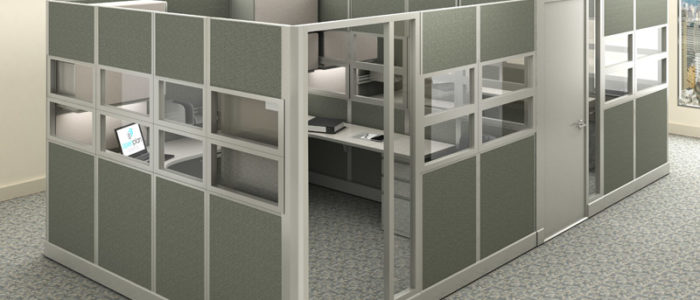
Top Office Furniture Manufacturers Rely On E-Commerce Acquisitions To Stay Relevant Through The Pandemic
The business model for office furniture manufacturers and their contract furniture dealers must evolve as a result of the changing workplace in the wake of the pandemic. Will cubicles with high walls return to the workplace or will the WFH model shift purchasing decisions from facility managers, architects and interior designers to the employees working from home? In the short term, home offices will surely be upgraded to more ergonomic, height-adjustable desks, purchased by employees with reimbursements funded as expenses by their employers. In the long term, we are likely to see a combination of remote workforces operating from home offices, together with downsized office spaces, remodeled with more expensive workstations with high panels and socially distanced layouts, funded as capital equipment expenditures which can be depreciated over time. In the meantime, the manufacturers who had the foresight to acquire established e-commerce channels, will gain a larger share of the market. Rather than considering e-commerce the enemy to the manufacturers’ survival, some companies have bolstered their range through strategic acquisitions such as Kimball International / Poppin.com, Herman Miller / Design Within Reach and Knoll / Fully.com.
Read more about these trends at: https://www.workwhilewalking.com/open-office-layout-covid-19-impact-on-future-design-of-commercial-office-spaces-and-home-office-accommodations
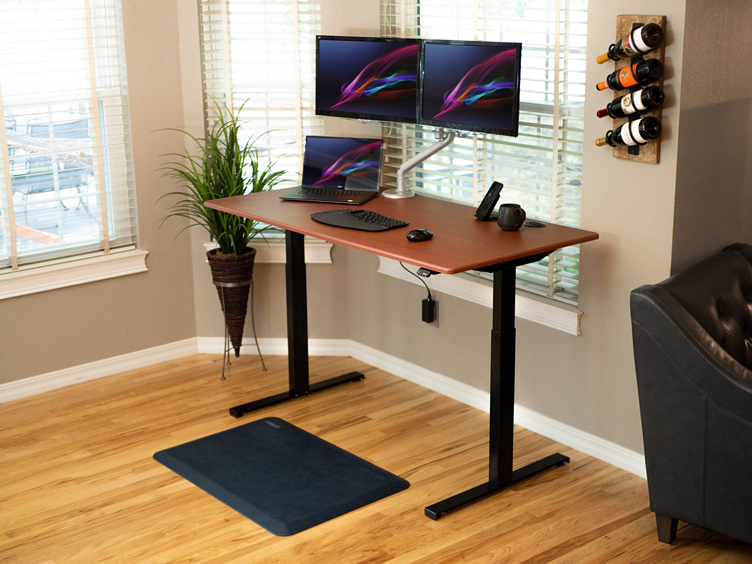
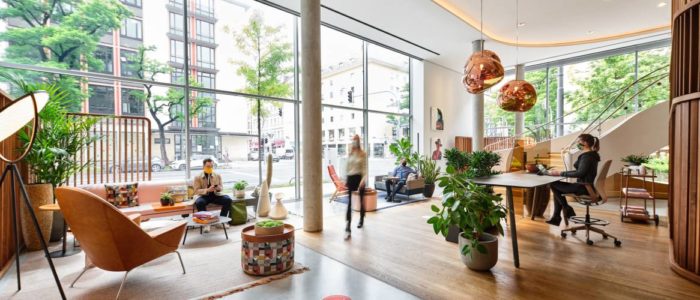
Steelcase Identifies Division, Density And Geometry As Key Elements in Office Reconfiguration
Steelcase has designed their Munich Learning and Innovation Center with screens around and between open plan workstations to create a division between workers facing each other. Density has been reduced by increasing distances between desks and pulling apart seating in collaborative spaces, in order to meet social distancing guidelines. Geometry has been altered by positioning workstations at 90 degree angles to each other.
Learn more about the new design elements Steelcase proposes for a safe return to offices at:
https://www.steelcase.com/eu-en/research/articles/topics/post-covid-workplace/welcome-back/
(Image credit: Steelcase)
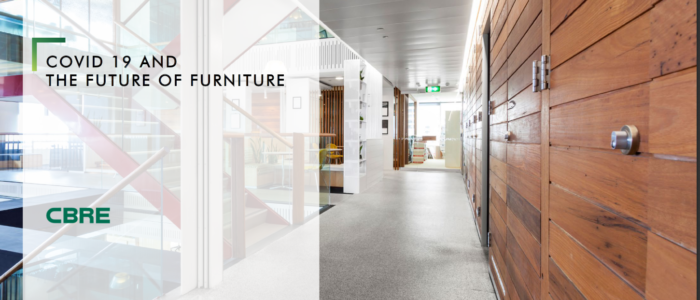
CBRE Publishes Insightful Forecast For The Future Of Office Furniture In The Workplace
CBRE, the largest commercial real estate services company in the world, has published an excellent study of measures required to combat exposure to Covid-19 in the workplace. The study includes detailed graphics explaining how furniture and layouts can be reconfigured in the short, medium and long term.
Read the full report at:
https://irp-cdn.multiscreensite.com/e894f327/files/uploaded/Future%20of%20Furniture%20post%20COVID%2019_CBRE%20Furniture%20Advisory.pdf
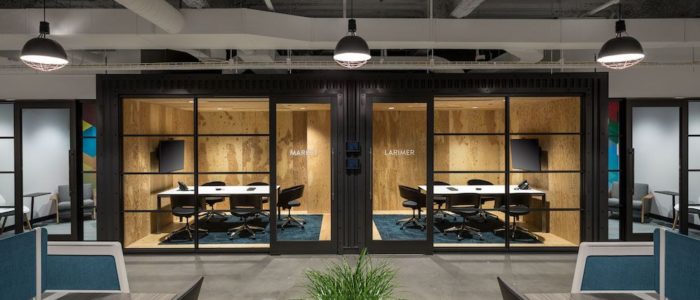
Office Design Likely to Come Full Circle From Private to Open Space and Back To Private Space
The workplace has evolved from an emphasis on private office suites, to open-plan workstations, to free-flowing collaborative open spaces. In the post-pandemic universe, we are likely to see a return to private spaces with micro private offices, larger workstations with barriers to transmission, fewer large conference rooms, elimination of small huddle spaces and a new functional style integrating tech-based solutions with social distancing and enhanced digital interaction.
Read more at:
https://www.workdesign.com/2020/04/what-people-can-expect-from-the-return-to-the-workplace/
(Photo credit: Work Design)
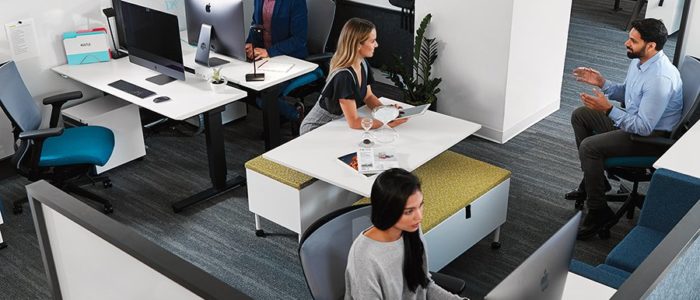
Generational Shifts in the Evolution of Workplace Design
According to KI, a manufacturer of office furniture, the modern workplace must address the needs of the 4 generations currently active in the workplace. While baby boomers are accustomed to private offices and personal workstations, the dawn of the digital age has been adopted by Gen X, Millenial and Gen Z employees to varying degrees, resulting in the need for more flexible workspaces.
Read more about how KI addresses the adaptability that must be incorporated into the modern workspace at:
https://blog.ki.com/designing-a-flexible-workplace-for-all-generations
(Photo from: blog.ki.com)
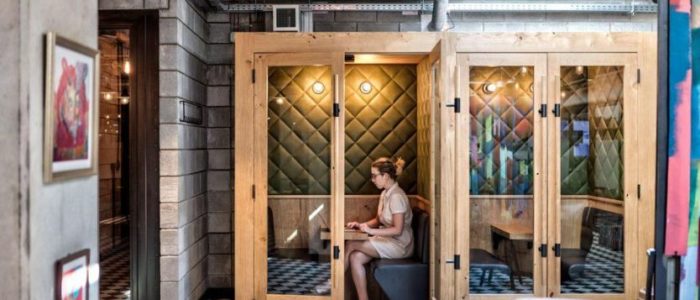
High Mobility and Adjustability Are Shaping Modern Office Design
The office design most suited to the mobility of the digital age must incorporate several elements, according to associate designer Stephanie Allen at Cooper Carry:
- Quiet spaces for focusing on detail-oriented work
- Spaces that encourage creativity and collaboration with surfaces to post conceptual materials
- Casual lounge areas
- Private rooms for confidential discussions
- Wi-Fi everywhere
Read more about the hottest trend in office space on Forbes.
(Photo Credit: Mindspace on Forbes)
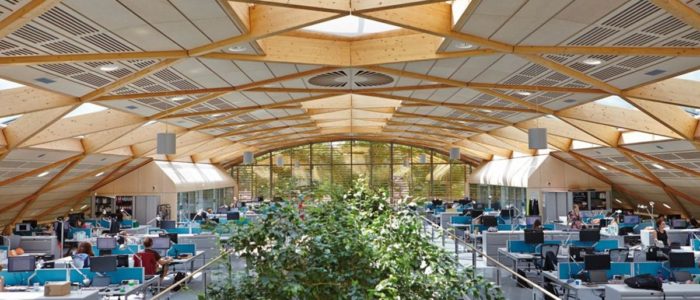
In The Future The Workplaces That Will Attract The Best Talent Will Be Circular
Environmental sustainability in the context of the workplace involves such measures as using sustainably sourced paper, as well as recycling paper and even selecting sustainable furniture for long term use. To minimize the impact on the environment, and attract socially conscious workers, the office of the future will not include inexpensive, low-quality furniture that won’t last and cannot be easily refurbished. Investing in high quality product makes the furniture last longer and reduces waste. If the product outlives the business, it still retains some resale value and is more likely to be repaired and reused than scrapped. Rather than disposing of outdated IT equipment, hard dives can be wiped clean and reprogrammed for reuse. Using sustainable resources to create adaptable, modular workspaces which can be reconfigured for future growth and changing needs is a strategy that will be cost-effective while meeting the standards of a new generation of environmentally conscious workers. Read more about the circular future of the workplace here.

Agile Workspaces Promote Collaboration, Creativity, Innovation And Problem Solving
According to research conducted by Steelcase, a trend is emerging in which companies focus on building agile workspaces for collaborative teams to solve complex problems and accelerate their response to market demand for innovation. The space needs to be dynamic and adaptable to changing tasks and promote face to face interaction between team members, rather than relying on slower, impersonal digital discussion. The space must provide areas for teams to display and share ideas, as well as private areas for tasks requiring concentration without disruption. Research shows that the linear workspaces of the past have not been conducive to creating a balance between collaborative teamwork and personal space. Read more about this trend at:
https://www.steelcase.com/eu-en/research/articles/new-work-new-rules/





